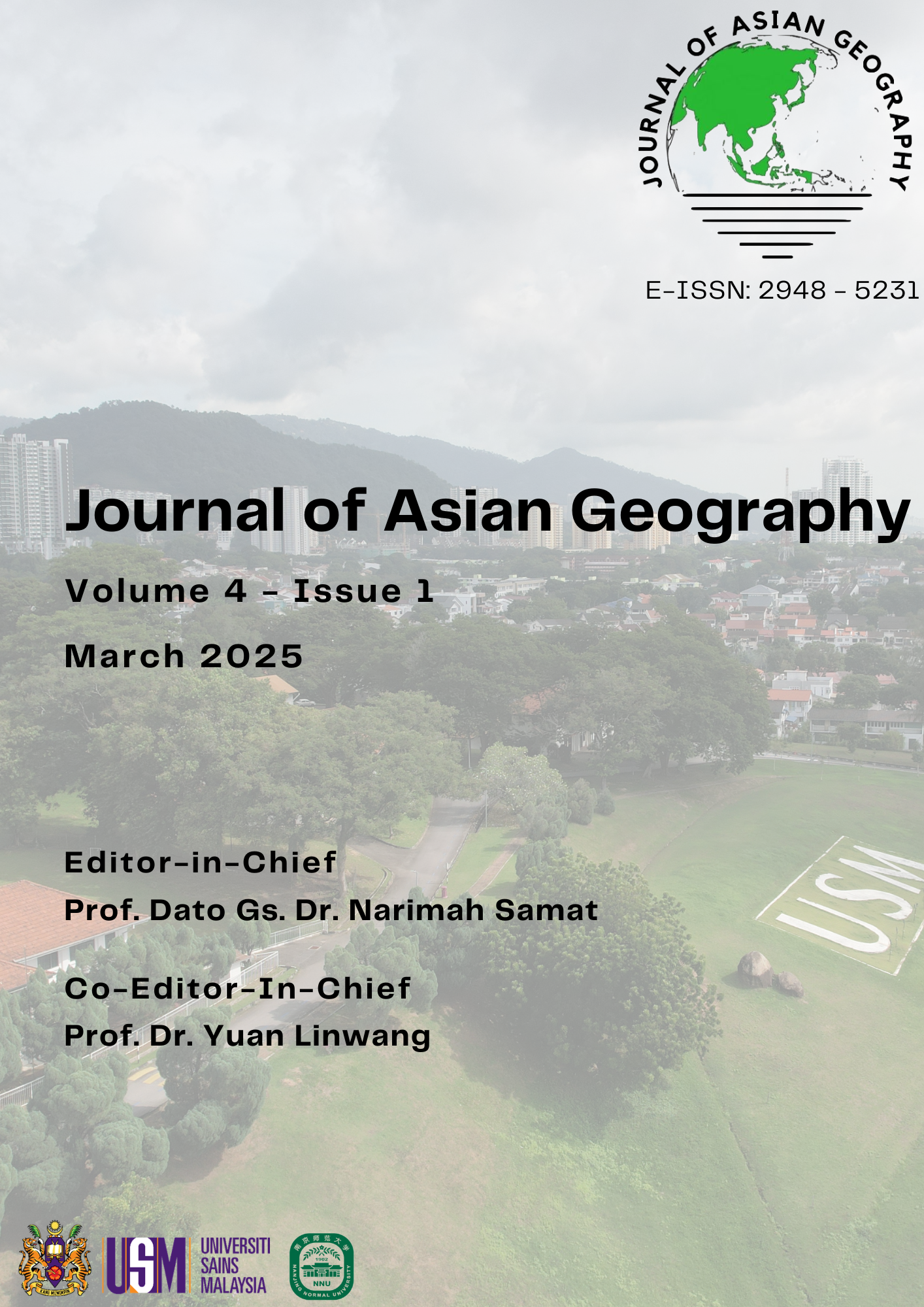Clustering and Significance in Spatial Distribution Analysis of the Skudai River Catchment Using Geographic Information System (GIS)
DOI:
https://doi.org/10.36777/jag2025.4.1.3Keywords:
Spatial distribution; pollution; GIS, environmental; land useAbstract
In this study, the spatial distribution patterns of point source pollution in the upstream Skudai River catchment were investigated, focusing on restaurants, laundromats, car washes, and workshops. Rapid urbanization and industrialization in the region have led to environmental challenges, including changes in hydrology, geomorphology, and deterioration in water quality. GIS technology played a crucial role in analyzing and visualizing the spatial dynamics of point source pollution. The analysis revealed non-random clustering patterns for each pollution source category, with concentrations observed in specific areas within the catchment. The study also explored the correlation between point source pollution and land use types, identifying concentration hotspots in commercial and residential areas, with the transportation sector emerging as a significant contributor to pollution. The proximity of pollution sources to water bodies and neighbor pattern analysis provided further insights. The findings offer valuable information for water resource management, environmental conservation, and urban planning in the Skudai River catchment, highlighting the importance of GIS-based spatial analyses for informed decision-making and effective pollution control measures.

Downloads
Published
Issue
Section
License
Copyright (c) 2025 Journal of Asian Geography

This work is licensed under a Creative Commons Attribution 4.0 International License.

